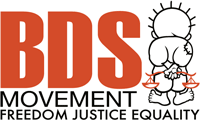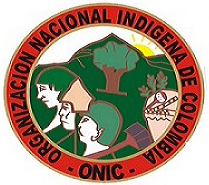Trump-induced migration crisis in Mexico
President Donald Trump's migration crackdown has been credited with reducing flows northward towards the United States, but it is leaving hundreds of thousands of migrants and asylum seekers trapped in limbo further south, unsure whether to take riskier journeys to try to reach the US and anxiously wrestling with what to do next.
In southern Mexico, where US and Mexican deterrence policies caused a major humanitarian crisis last year, local residents say crossings from Guatemala to the border state of Chiapas have significantly decreased. At the US southern border, numbers apprehended by US Border Patrol dropped from around 61,500 in January to 11,709 last month. And in the Darién Gap—the treacherous jungle migration route connecting South and Central America—crossings have also decreased dramatically, from 25,111 last September to just 408 in February.
But the stifling effect of Trump policies on the movement of people heading north is creating new challenges. People on the move are now stranded in precarious living conditions across Mexico, more exposed to potential abuses and violence, and deeply affected by the uncertainty of further policy changes ahead.
"Even though the number of people on the move may have fluctuated, we still have thousands of migrants, refugees, and asylum seekers in Mexico who have urgent, unmet needs," said Michelle Van Akin, associate director for humanitarian programs for Plan International USA.
Trump administration funding cuts to foreign aid have forced a reduction in services and are making it harder for humanitarian organisations to provide assistance, according to Van Akin. "The needs are staggering," she added.
“The main problem is that migrants are stranded with no information about whether they will be able to apply for asylum [in the US] again or if there will be new norms allowing them to transit to the United States,” said Reinaldo Ortuño, Mexico and Central America medical coordinator at Médecins Sans Frontières (MSF).
Mounting needs
About 270,000 people were waiting to get an appointment to seek asylum in the United States through US Customs and Border Protection's controversial CBP One cellphone application when Trump shut it down on January 20, the day he re-entered office.
People relying on the application for an opportunity to enter the US were left stranded along Mexico's southern and northern borders, in Mexico City, and in more remote areas with fewer resources. Since it was launched in 2023, nearly one million people had been able to enter the US legally using CBP One. But people often had to wait for extended periods of time, living in precarious and often dangerous conditions before they were able to secure an appointment.
Aid groups say that many asylum seekers—having fled gang violence, political repression, and other crises throughout Latin America and the Caribbean—have not given up on the idea of crossing to the US and are waiting for new opportunities, hoping the policies will change.
In Mexico City, they have been setting up unsafe, makeshift camps, and thousands are also living in dire conditions in northern and southern Mexico.
"The main needs that we've identified include legal assistance to regularise immigration status, urgent medical care, including mental health support, and access to reliable information as well as basic needs like food, shelter, hygiene materials," said Van Akin.
Enrique López, field coordinator for Doctors of the World in Tapachula, a city in the state of Chiapas along Mexico’s southern border where many asylum seekers and migrants first arrive from Guatemala, said that although the number of migrants crossing the border dropped in February, people continue to arrive.
Those still entering Mexico are mostly from Cuba, Honduras, and Haiti, and are still hoping to eventually reach the US, according to López. Others are coming to Tapachula from other states in Mexico, trying to return to their home countries, while many already in Tapachula are searching for work to support themselves and planning to request asylum in Mexico.
"They don't do it by choice, but rather because transiting through Mexico has become more complicated and there are no ways to access the United States, if not irregularly," López said. "The cases we see are more complex as migrants take more dangerous routes, are exposed to more risks, and don't have the possibility to travel in large groups [to protect themselves] anymore," he told The New Humanitarian.
Acute respiratory infections, skin diseases, and gastrointestinal problems are some of the most common health issues. Rape and sexual violence also remain major issues.
"We do case management for survivors of [gender-based violence], and the same number of cases continue to come in," said López. "There are more risks, less services, and less funding to assist."
Growing exposure to abuse
Organizations such as MSF have warned that sexual violence against migrants on the route between Colombia and Mexico is on the rise. In 2024 alone, the organisation assisted more than 700 survivors of sexual violence in Mexico and hundreds more in Central American countries—far more than the 232 they assisted in 2023.
For the many migrants escaping violence—and who have been subjected to violence while on the move—the prospect of having to return to their home countries and potentially relive the same abuses is particularly dreadful.
According to a poll led by the Danish Refugee Council, 26% of the migrants interviewed between October and December 2024 in the Mexican cities of Matamoros, Reynosa, and Tapachula said the reasons for leaving their country were threats, violence, and intimidation. Another 21% mentioned insecurity and general violence, and 12.7% persecution.
"It means a huge emotional burden, frustration, and anxiety, because by returning to the places they escaped they put their health and physical integrity at risk," said MSF's Ortuño.
A legal limbo
Some efforts have been made to help migrants who want to return to their country of origin. In early February, the UN’s migration agency, IOM, announced it was expanding its Assisted Voluntary Return (AVR) program in Mexico, Guatemala, Honduras, and Panama to facilitate safe returns. In January and February, IOM received nearly 2,900 requests—three times more than during the same period last year.
But the Trump-induced crisis in Mexico is being compounded by shortcomings in migration policies across Latin America. There has been no coordinated response to address the situation by scaling up consular services to facilitate returns or by fostering integration initiatives in their respective countries: Migrants are often pushed to leave because of xenophobia and lack of opportunities.
An agreement between Venezuelan President Nicolás Maduro's administration and the Mexican government reportedly allowed more than 500 nationals to be repatriated. But for many, returning safely to their home countries—or to a country where they will feel safe—is not an easy prospect.
For migrants from other parts of the world—Indians, Afghans, Chinese, and others—stranded in Mexico, the hurdles are even higher. Local humanitarian workers say discrimination is common and language barriers compound other vulnerabilities. The Mexican Commission for Refugee Aid (COMAR), which handles asylum claims, and other institutions providing assistance to migrants often don't have translators or the ability to understand the specific needs of people from all over the world.
Dwindling aid
As humanitarian needs mount, the Trump administration's decision to massively cut funding for foreign aid makes it all the more difficult for aid groups to respond.
"We [at MSF] still have the capacity to provide support on the health front, but we notice the absence of other actors who play an important role in protection and other services," said Ortuño.
The Adventist Development & Relief Agency International—a faith-based NGO that provides legal counsel, medical services, and internet access across Chiapas—was forced to reduce its assistance due to funding cuts, and Plan International had to shut down its child protection programs in Tapachula.
The New Humanitarian contacted several other organizations and agencies to find out whether they had to suspend some of their activities, but they refused to comment.
"That decision [to suspend foreign aid] is limiting us a lot, and we will have to see where to diversify funds," a staff member at one affected organisation told The New Humanitarian, on condition of anonymity, adding: "Now, the salaries will be taken out of an emergency fund."
The reduced presence of aid groups impacts other factors too, Van Akin said: "It makes it very difficult to have an accurate idea of how migration dynamics are changing because of the suspension of funding. It's hard for us to be able to paint an accurate picture."
— Daniela Díaz for The New Humanitarian, March 26 (condensed; some internal links added)
Reporting for this article was supported by the Fund for Investigative Journalism. The New Humanitarian used transportation provided by Médecins Sans Frontières to secure access to migrants and staff in the organization's mobile clinics in Tapachula and Suchiate. Additional reporting by Daniela Mohor and by Eric Reidy. Edited by Andrew Gully.

















Recent Updates
26 min 40 sec ago
5 hours 15 min ago
20 hours 24 min ago
20 hours 49 min ago
1 day 4 hours ago
1 day 5 hours ago
1 day 21 hours ago
2 days 5 hours ago
3 days 22 hours ago
3 days 22 hours ago